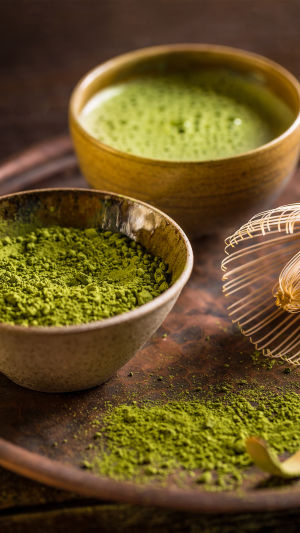Matcha powder occupies a unique place in the world of flavoring agents, offering a versatility that captivates dessert enthusiasts with its distinctive taste.
You'll find it enhancing a wide range of delectable treats like matcha cakes, matcha ice creams, and more.
However, it's essential to realize that not all things labeled as "matcha" truly embody the essence of this useful tea.
Matcha is, at its core, steamed green tea meticulously ground into an ultra-fine powder using natural stone mills.
A common misconception often arises when people confuse matcha with green tea. Genuine matcha goes through a more intricate process and boasts significantly higher nutritional value than green tea powder.
Its price tag is at least thirty times that of green tea powder.
Ways to Distinguish Matcha from Regular Green Tea Powder:
1. Check the Fineness: Matcha powder is exceptionally fine, with a smooth texture akin to high-end foundation. When you touch it, the particles adhere more readily to your skin compared to coarser green tea powder.
Authentic matcha, due to its extended growth period, contains more amino acids, lending it a fresh, seaweed-like aroma. In contrast, green tea powder retains the familiar scent of ordinary tea.
2. Bitterness Factor: The most significant divergence lies in bitterness. Matcha powder is almost entirely devoid of bitterness. To achieve this, matcha tea leaves are typically harvested later than those for green tea.
During their growth, matcha gardens employ shading techniques, using black netting to filter out harsh sunlight. This facilitates the synthesis of more chlorophyll and amino acids in the leaves.
Consequently, true matcha exhibits a vibrant green hue and a sweet, savory flavor, devoid of the bitter and astringent notes found in regular brewed green tea.
3. Light Sensitivity: Matcha powder is highly sensitive to light. If exposed to sunlight for just half an hour, it can turn an unsightly gray.
Conversely, artificially colored powders masquerading as matcha won't undergo significant color changes when subjected to light.
4. Types of Matcha: Matcha comes in two primary types: thin tea and strong tea. As the names suggest, they offer distinct tastes, each suitable for different occasions. Thin tea demands less rigorous standards and is often used in matcha tea ceremonies.
Strong tea, on the other hand, boasts a higher grade, suitable for direct consumption. There's also baking matcha, primarily used for baking purposes. Prices typically follow the order of strong tea being the most expensive, followed by thin tea, and then baking matcha.
Understanding the nuances of matcha and how to differentiate it from regular green tea powder can help you appreciate this unique and cherished ingredient to its fullest potential.





